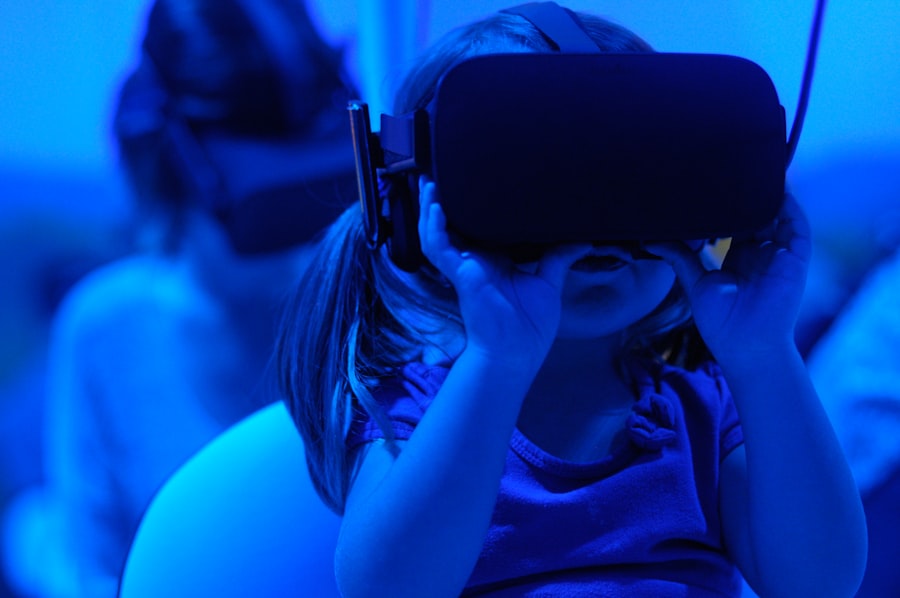The Metaverse is a collective virtual space that merges physical and digital realities, creating an immersive environment where users can interact with each other and digital objects in real-time. This concept transcends traditional online experiences, offering a 3D universe that encompasses various virtual worlds, augmented reality, and even elements of the physical world. The term gained traction in popular culture through literature, notably in Neal Stephenson’s 1992 novel “Snow Crash,” where it depicted a virtual reality-based successor to the internet.
Today, the Metaverse is envisioned as a vast network of interconnected virtual environments, where users can socialize, work, play, and create. At its core, the Metaverse is not merely a single platform but an expansive ecosystem that includes gaming, social media, virtual commerce, and more. Companies like Meta (formerly Facebook), Microsoft, and Epic Games are investing heavily in developing their versions of the Metaverse, each with unique features and functionalities.
The Metaverse aims to provide a persistent experience that continues to evolve even when users log off, allowing for a sense of continuity and permanence that traditional online platforms lack. This interconnectedness is what sets the Metaverse apart from isolated virtual experiences, making it a revolutionary concept in digital interaction.
Key Takeaways
- The Metaverse is a collective virtual shared space, created by the convergence of virtually enhanced physical reality and physically persistent virtual reality.
- Unity in the Metaverse is crucial for creating a seamless and connected virtual world where users can interact and collaborate across different platforms and experiences.
- Building a connected virtual world requires interoperability and standardization of technologies to ensure a cohesive user experience.
- Creating a seamless user experience in the Metaverse involves integrating various technologies such as virtual reality, augmented reality, and blockchain to enable smooth interactions and transactions.
- Technology plays a key role in achieving Metaverse unity by enabling cross-platform compatibility, immersive experiences, and secure transactions.
The Importance of Unity in the Metaverse
Interoperability and User Satisfaction
A key aspect of unity in the Metaverse is interoperability. This means that users should be able to use their digital assets, such as avatars and outfits, across different platforms and environments without having to repurchase or recreate them. For instance, a user who buys a digital outfit in one game should be able to wear it in another game or virtual space. This not only enhances user satisfaction but also encourages greater engagement across different platforms.
Collaboration and Innovation
Unity in the Metaverse also promotes collaboration among developers and creators. When different virtual worlds adhere to common standards and protocols, it becomes easier for creators to build upon each other’s work. This collaborative spirit can lead to innovative experiences that blend elements from various games and applications. For example, a musician could perform a concert in one virtual world while fans from another world join in through their avatars, creating a shared experience that transcends individual platforms.
Fostering Creativity and Community
Such interactions highlight the importance of unity in fostering creativity and community within the Metaverse. By enabling seamless interactions and collaborations, unity in the Metaverse can lead to new and innovative experiences that bring people together across different platforms and environments.
Building a Connected Virtual World

Creating a connected virtual world requires robust infrastructure and thoughtful design principles that prioritize user interaction and engagement. Developers must consider how different virtual environments can communicate with one another while maintaining their unique characteristics. This involves establishing common protocols for data exchange, user identity management, and asset ownership.
Blockchain technology has emerged as a potential solution for ensuring secure transactions and ownership rights across various platforms, allowing users to buy, sell, and trade digital assets without fear of fraud or loss. In addition to technical considerations, building a connected virtual world necessitates an understanding of user behavior and preferences. Developers must create intuitive interfaces that facilitate easy navigation between different environments while ensuring that users feel a sense of belonging in each space they enter.
For instance, social hubs can serve as gateways to various experiences, allowing users to meet friends before venturing into games or events. By designing interconnected spaces that prioritize social interaction and exploration, developers can cultivate a vibrant ecosystem that keeps users engaged and invested in their virtual lives.
Creating a Seamless User Experience
| Metrics | Data |
|---|---|
| Page Load Time | 2.5 seconds |
| Conversion Rate | 15% |
| Bounce Rate | 20% |
| User Satisfaction | 4.5 out of 5 |
A seamless user experience is essential for the success of the Metaverse, as it directly impacts user retention and satisfaction. To achieve this, developers must focus on minimizing barriers to entry while maximizing engagement opportunities. This includes optimizing performance across devices, ensuring compatibility with various hardware configurations, and providing intuitive controls that cater to both novice and experienced users.
For example, cross-platform compatibility allows users on different devices—such as VR headsets, PCs, or mobile phones—to interact within the same virtual space without experiencing significant differences in performance or functionality.
By leveraging data analytics and machine learning algorithms, developers can tailor content and experiences to individual preferences.
This could involve recommending specific events or activities based on a user’s past interactions or allowing users to customize their avatars with unique features that reflect their personalities. Such personalized experiences not only make users feel more connected to the virtual world but also encourage them to explore new opportunities within it.
The Role of Technology in Metaverse Unity
Technology serves as the backbone of unity within the Metaverse, enabling seamless interactions between users and diverse virtual environments. Advanced technologies such as artificial intelligence (AI), blockchain, and cloud computing are instrumental in creating an interconnected ecosystem where users can engage without friction. AI can enhance user interactions by providing intelligent NPCs (non-player characters) that respond dynamically to user actions or by facilitating real-time language translation for global audiences.
This ensures that users from different backgrounds can communicate effortlessly within shared spaces. Blockchain technology plays a pivotal role in establishing trust and security within the Metaverse. By providing decentralized ownership of digital assets through non-fungible tokens (NFTs), blockchain enables users to buy, sell, and trade items across different platforms while maintaining verifiable ownership records.
This fosters a sense of permanence and value for digital assets that transcends individual games or applications. Additionally, cloud computing allows for scalable infrastructure that can support vast numbers of concurrent users across multiple environments, ensuring that performance remains consistent even during peak usage times.
Overcoming Challenges in Metaverse Unity

Despite its potential, achieving unity within the Metaverse presents several challenges that must be addressed for its successful implementation. One significant hurdle is the lack of standardized protocols across different platforms. Without common frameworks for interoperability, users may find themselves restricted to isolated experiences that do not communicate with one another.
This fragmentation can lead to user frustration and diminish the overall appeal of the Metaverse as a cohesive entity. Another challenge lies in ensuring user safety and privacy within interconnected environments. As users navigate through various virtual spaces, they may encounter risks such as harassment or data breaches.
Developers must implement robust security measures to protect user information while fostering a safe environment for interaction. This includes establishing clear community guidelines and moderation practices that promote respectful behavior among users. By addressing these challenges head-on, developers can create a more unified Metaverse that prioritizes user experience and safety.
The Future of the Metaverse
The future of the Metaverse holds immense potential for transforming how we interact with technology and each other. As advancements in technology continue to evolve, we can expect increasingly immersive experiences that blur the lines between physical and digital realities. Virtual reality (VR) and augmented reality (AR) will likely become more mainstream, allowing users to engage with the Metaverse in ways previously thought impossible.
Imagine attending a live concert where holographic performers interact with you in your living room or collaborating on projects with colleagues from around the globe as if they were physically present. Moreover, as more industries recognize the value of the Metaverse, we may see its integration into various sectors such as education, healthcare, and commerce. Virtual classrooms could provide interactive learning experiences that cater to diverse learning styles while remote medical consultations could leverage immersive technologies for better patient engagement.
The potential applications are vast and varied, suggesting that the Metaverse will become an integral part of our daily lives rather than just an entertainment platform.
The Impact of Metaverse Unity on Society
The unity within the Metaverse has far-reaching implications for society as a whole. By fostering interconnectedness among users across different platforms and environments, the Metaverse can promote inclusivity and diversity in ways traditional social media cannot achieve. Users from various backgrounds can come together in shared spaces to collaborate on projects, share ideas, or simply socialize without geographical limitations.
This democratization of access can lead to greater cultural exchange and understanding among individuals who may never have crossed paths in the physical world. Furthermore, as businesses increasingly adopt virtual environments for commerce and marketing, the economic landscape will shift dramatically. The rise of virtual economies will create new job opportunities in fields such as digital asset creation, virtual event management, and community moderation.
This shift could lead to innovative business models that prioritize user engagement over traditional advertising methods. Ultimately, the unity within the Metaverse has the potential to reshape societal norms around communication, collaboration, and commerce in profound ways that we are only beginning to understand.

Leave a Reply